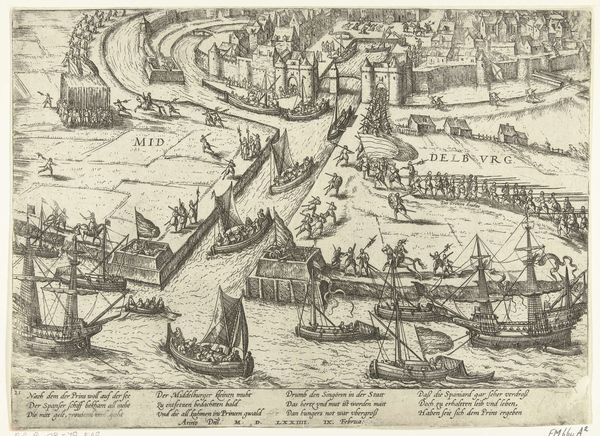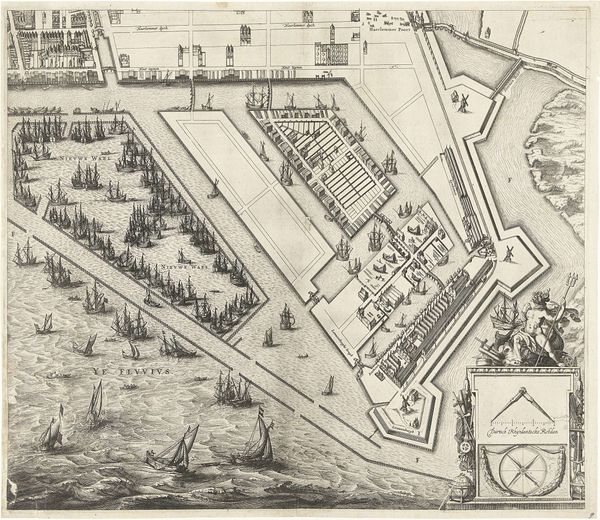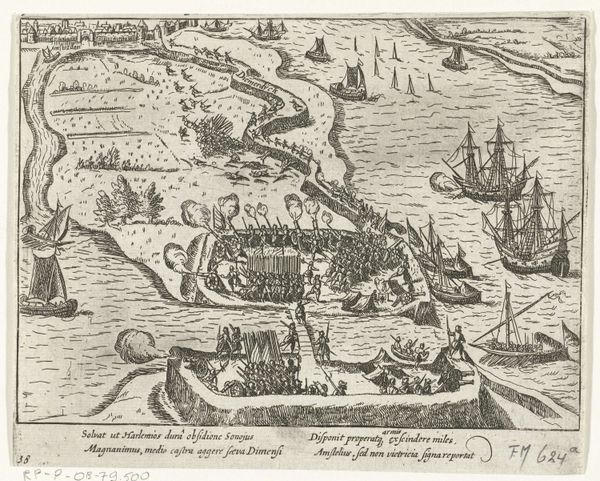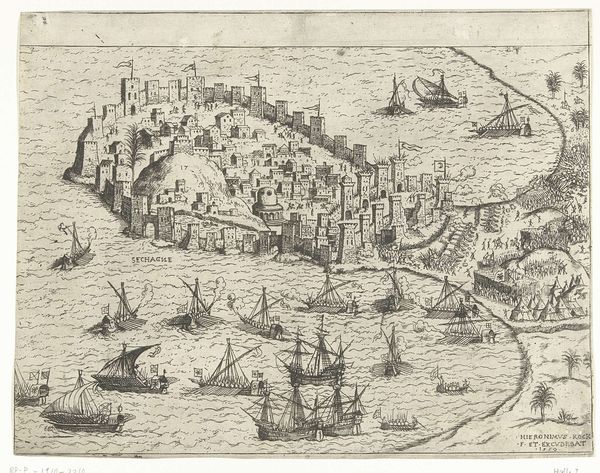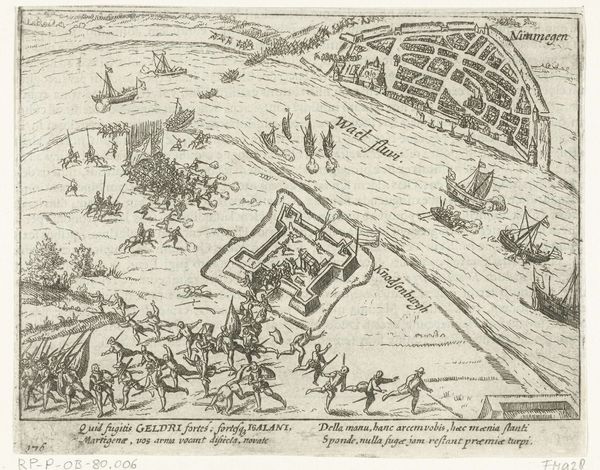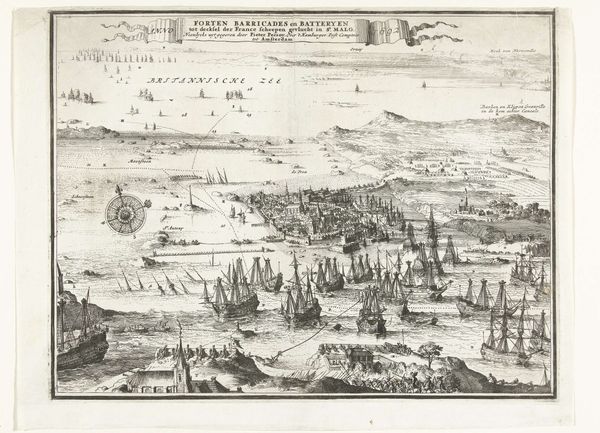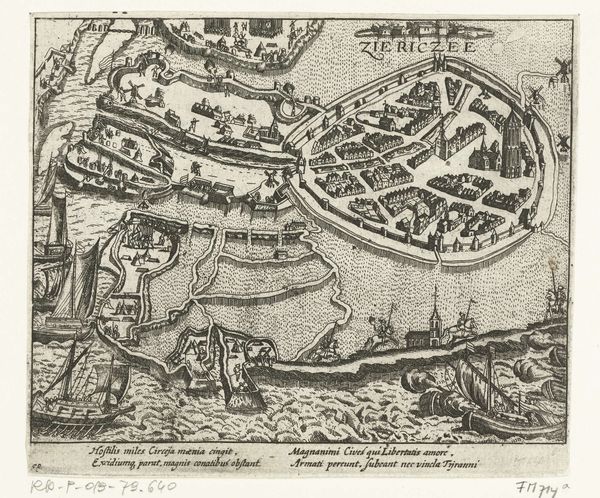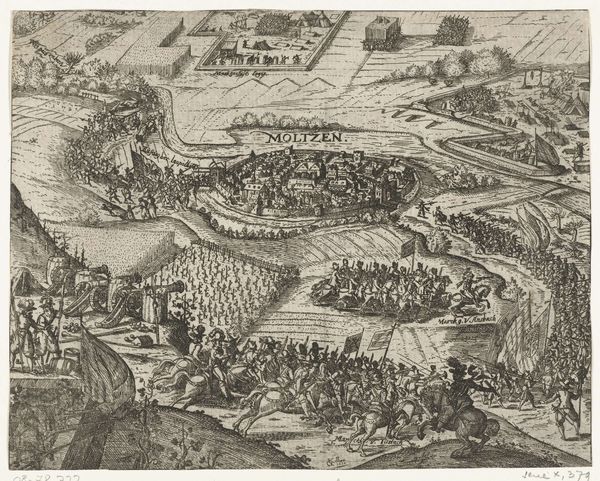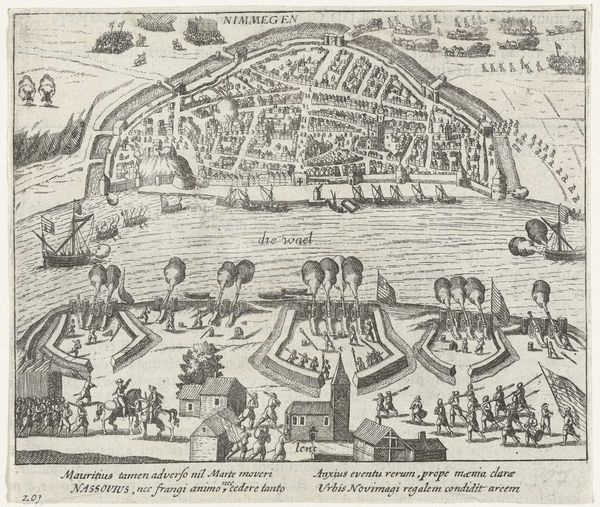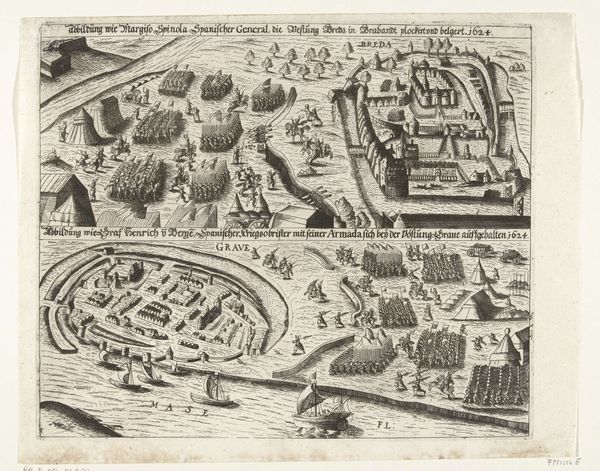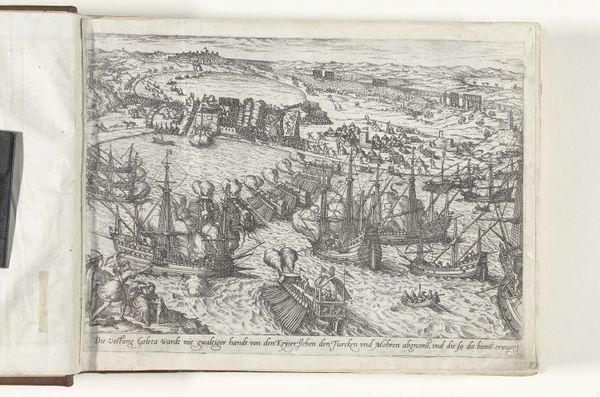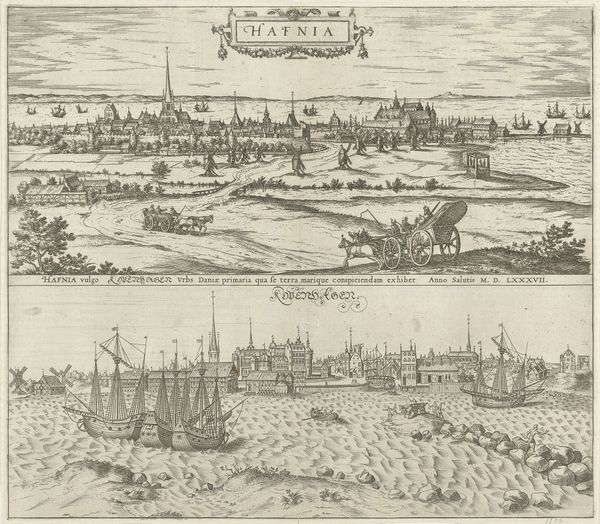
De laatste belegering van Rheinberg door Maurits, 1601 1601 - 1602
0:00
0:00
print, engraving
#
medieval
#
pen drawing
#
dutch-golden-age
# print
#
landscape
#
line
#
cityscape
#
history-painting
#
engraving
Dimensions: height 348 mm, width 530 mm
Copyright: Rijks Museum: Open Domain
Editor: Here we have Lambert Cornelisz's "The Last Siege of Rheinberg by Maurits," an engraving from 1601-1602. It's incredibly detailed and almost feels like a bird's-eye view of a complex board game in progress, with soldiers and ships meticulously placed. What strikes you most when you look at this print? Curator: The visual language immediately grabs me. Notice how Cornelisz employs a visual shorthand to communicate a wealth of information? Each symbol – a cluster of tents, a fortified wall, even the individual ships – acts as a tiny vessel carrying layers of cultural meaning and psychological resonance related to warfare and power. Consider the placement of Prince Maurits and his troops; what do they represent? Editor: Well, Maurits and his troops would represent order and the strength of the Dutch Republic. They appear to be on the move toward battle, and in position to lay siege. Curator: Precisely. And how does the artist visually communicate the city's position? It is more than just geographic information, it communicates the perceived safety and protection within those city walls. Fortification implies fear of the "outside" world and perhaps, for some viewers, might carry the feeling of security for those sheltered inside. It speaks volumes about 17th-century anxieties and aspirations, doesn't it? Editor: It really does. It's amazing how much narrative and emotional weight is packed into seemingly simple lines and shapes. I'd never considered the psychology embedded in maps like this before. Curator: These images tap into deeply ingrained cultural memories of conflict and resolution. Consider also the lasting power of visual representation in shaping our understanding of history. Maps are so often taken at face value. Editor: I agree, viewing this map with symbolism in mind definitely enriches the story it tells. I'll never look at old maps the same way again. Curator: Wonderful. The intention is to delve below the surface!
Comments
No comments
Be the first to comment and join the conversation on the ultimate creative platform.
